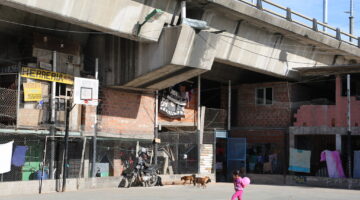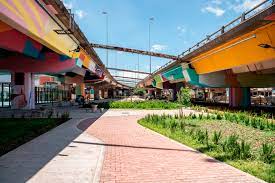




Barrio 31, Buenos Aires
Main objectives of the project
Barrio 31 in Buenos Aires serves as a testament to the city's commitment to social and urban integration. From physical upgrades like new roads to socio-economic initiatives or housing programs, residents actively participate in enhancing living conditions and community development. Supported by favorable loan terms, housing improvements ensure affordability and stability, driving sustainable transformation without rampant gentrification.
Date
- 2016: Implementation
Stakeholders
- Promotor: Buenos Aires Ciudad Autónoma
Location
City: Buenos Aires
Country/Region: Argentina, Buenos Aires
Description
The City of Buenos Aires currently faces the challenge of integrating nearly 250,000 individuals residing in slums or informal urban settlements. This integration necessitates interventions addressing both social and urban issues concurrently. The conviction of the city lies in fostering integration, ensuring these populations have equal opportunities and responsibilities as other residents.
Various social and urban integration projects are underway in Buenos Aires, benefitting not only the quarter of a million slum dwellers but all inhabitants of the city. One such project is located in Barrio 31, positioned strategically amidst affluent districts like Retiro and Recoleta, near the national government seat, financial hub, and iconic Obelisk monument. Unlike many slums situated on the city's south side, Barrio 31 faces physical and social barriers, including train tracks, the Illia highway, and disparities in education, health, and employment access.
The Integral Plan for Barrio 31 aims at urbanizing the area, constructing new roads, and integrating the neighborhood into the city fabric. Additionally, initiatives such as proper street paving and renaming contribute to a sense of belonging. The plan encompasses social and economic aspects, focusing on enhancing family living conditions through housing and economic development, exemplified by initiatives like the "patio gastronómico" and the creation of green spaces.
Structured around four main areas—Habitat, Human Capital, Economic Development, and Urban Integration—the Barrio 31 project adopts a holistic approach, viewing residents as both individuals and a collective. Housing plays a crucial role, with programs focusing on building new homes and renovating existing ones, thereby improving living conditions and fostering a sense of community. The housing programs encompass Comprehensive Improvement, External Improvement, and Self-management. These voluntary and free programs involve collective and individual interventions aimed at enhancing living conditions, safety, and accessibility. Residents are empowered to actively participate in the improvement process, ensuring that individual enhancements benefit the entire community.
Comprehensive Improvement: This program involves collective interventions in both the interiors and exteriors of all houses within a block. It aims to enhance ventilation, lighting, service access, safety of technical installations, and dwelling access. Residents actively participate throughout the process, fostering awareness that improving individual houses benefits the entire block.
External Improvement: This program focuses on improving the exteriors of houses along main thoroughfares. The interventions include plastering, rainproofing, and paintwork to combat humidity, as well as replacing stairways, doors, and windows to enhance safety and accessibility. These exterior enhancements also positively impact the interior living conditions.
Self-management: Residents are empowered to improve their own homes through a supported program. Social workers and architects assess the buildings, devise improvement plans tailored to individual family needs, and provide necessary materials. Residents are guided throughout the process, enabling them to implement the proposed improvements to sanitation facilities and living conditions effectively.
Financially, households are supported through loans with favorable terms, ensuring that no family spends more than 20% of its income on housing. Repayment options are tailored to individual circumstances, with fixed monthly payments and the possibility of shortening the loan period for those with stable incomes. This payment model aims to ensure affordability and financial stability for low and middle-income families, aligning with repayment standards prevalent across the city.
Barrio 31 has become a role model of a huge transformation of an informal settlement and their integration to the city. It began at 2016 and it is still ongoing. Yet, the results can be already seen: new businesses in the neighborhood, new green spaces, housing improvements and no massive gentrification.

